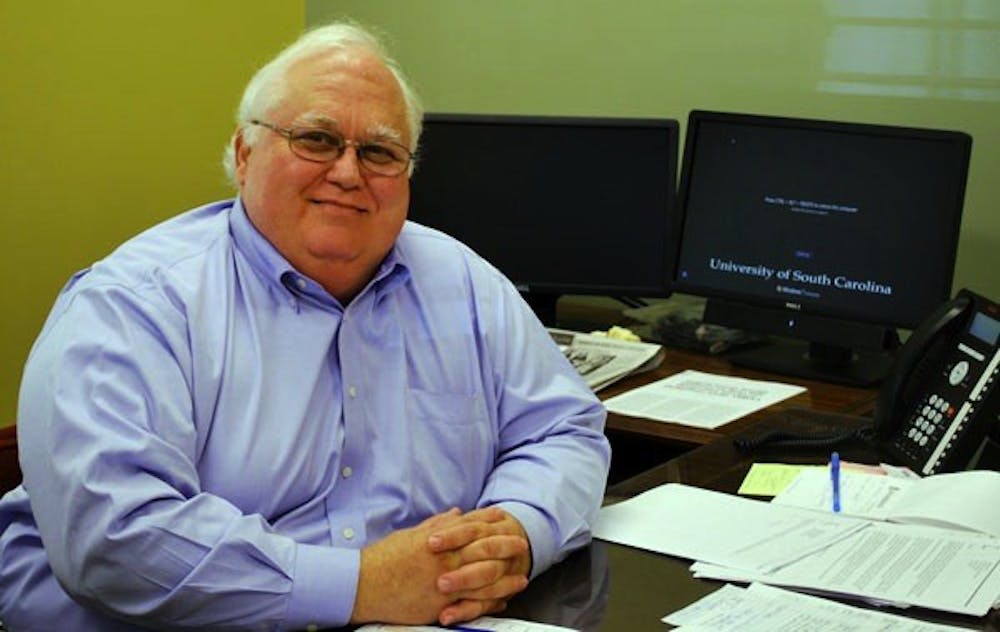USC arm owns big chunks of Columbia property
Stop for a moment and look around Columbia. There’s a good chance USC has its stamp on something nearby — even some properties you may not expect.
Some tennis courts on Blossom Street. An empty field near USC’s baseball stadium. A portion of a downtown condominium project. A child development center. They’re among the tens of millions of dollars in investments by the USC Development Foundation.
The foundation’s job is to acquire and manage property for the university’s benefit. It is among five foundations of the university such as: the Educational Foundation, Alumni Association, Business Partnership Foundation and the South Carolina Research Foundation.
“Our whole reason to be here is to support the university,” said Russell Meekins, who took over as executive director of USC Foundations in January. He had been director of the educational foundation and chief financial officer of the foundations. “We’re separate, so we aren’t subject to some of the governmental regulations that the university has as a state agency.”
Putting your eggs in the real estate basket
Real estate accounted for 41 percent, or more than $30.6 million, of the development foundation’s nearly $67 million in assets at the end of June 2012, according to its most recent independent audit and IRS Form 990.
“It’s all about not putting your eggs in one basket,” and real estate helps lessen volatility while diversifying income, said William Jarvis, managing director of the Commonfund Institute, which studies and reports on investment behaviors.
But while property rents can provide constant cash flow, real estate often can’t be bought or sold quickly, he said.
The foundation made almost $3 million from all its investments in the fiscal year ending June 30, 2012, according to its tax form.
That income includes rent from properties like the more than six acres of high ground and 20 acres of flood plain at Blossom and Williams streets next to USC’s baseball stadium. A foundation-controlled company, Williams At Blossom LLC, owns the land. USC paid the foundation more than $86,000 in rent in fiscal year 2012 to use the land for baseball parking. But when Carolina Stadium is empty, so is the lot.
Real estate investments can also involve risks, like The Inn at USC. The foundation owns 80 percent of USC Hotel Associates LLC, which runs the Pendleton Street hotel. For its share, the foundation lost $423,488 from the investment last year, according to its tax form.
In 2009, the foundation wrote off more than $4.2 million it invested through another subsidiary in the Adesso condos on Main Street as sales slowed in the recession. The foundation owns 49 percent of the project, one of the first in the university’s Innovista district.
Shaping the community’s character
The foundation invested in Adesso in 2006 to control the quality and aesthetics of a prime property adjacent to campus, and the loss was just the result of bad timing, Meekins said.
“It was a bad investment,” Meekins said. “Yes, we wanted to make money. We didn’t want to lose money; let me put it that way. But our main goal was to control the property and get our money back. And we didn’t get our money back.”
The condos are now sold out, Meekins said, though many sold at sharply reduced prices, and he said the foundation is pleased with the property’s character.
Adesso represents the foundation’s goal to “responsibly develop” land surrounding the university in a diverse and urban environment, Meekins said.
That’s why the foundation sits on properties like the former Gamecock women’s tennis courts on Blossom Street, which the foundation acquired in a trade of properties with the university in 2008, as well as a number of undeveloped residential lots in the Wheeler Hill neighborhood the foundation began acquiring in the late 1960s, he said.
Wheeler Hill was once a lower-income African-American neighborhood. The area has now been largely gentrified. The foundation bought many of the properties as part of the city’s urban renewal movement.
The foundation is waiting for the right development opportunity for those properties to best serve the university’s needs, Meekins said.
“We’re not your typical developers where we’re going to sell our souls for every penny we can possibly squeeze out of a plan,” he said. “We want to be good neighbors. We want to do what’s right for the university and for the neighborhood, too.”
But the foundation’s holdings do take some properties off the city’s tax rolls. The foundation pays taxes on about two-thirds of its properties with a bill totaling about $300,000 a year, Meekins said. The other third of its holdings — like a soccer field next to Thirsty Fellow in the Vista, some parking lots and some buildings used for research — are tax exempt, he said.
Meekins’ goal for the foundation is transparency.
“We don’t want people to think we are a slush fund,” he said. “That’s what people automatically think, that we are here to overrun rules and regulations, and we’re not. We’re a charity designed to help the university as much as we can.”
_Editor’s note: This story originally appeared on datelinecarolina.org

